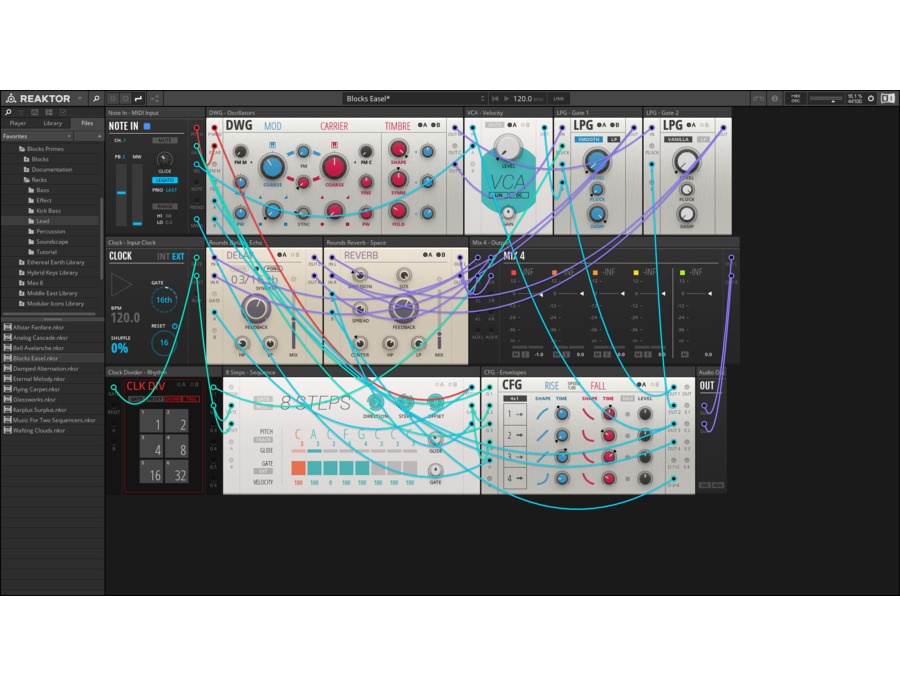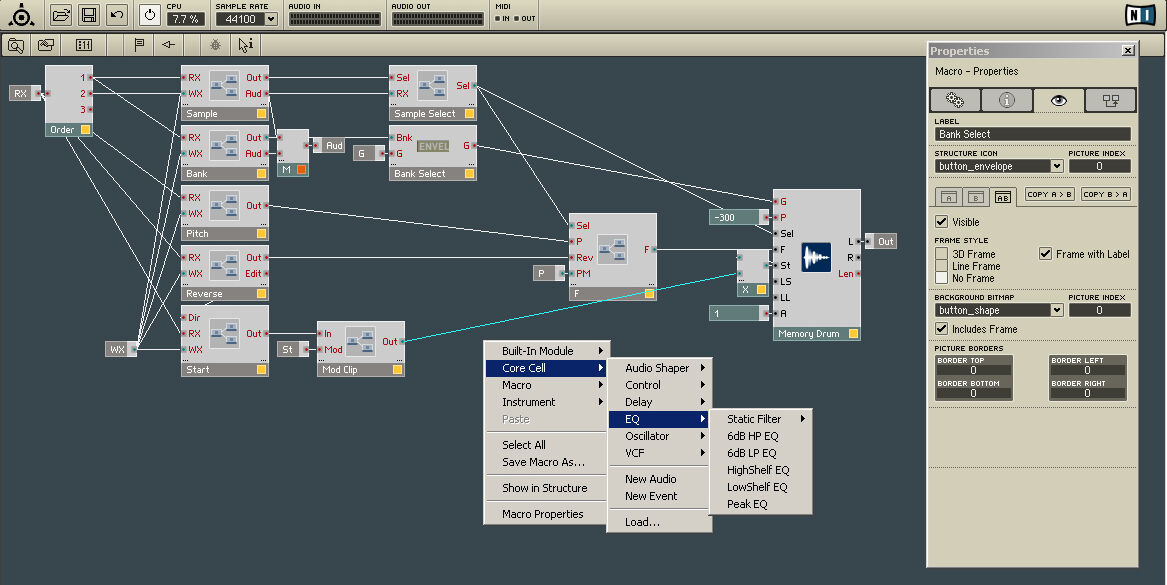

- Reaktor instruments how to#
- Reaktor instruments update#
- Reaktor instruments full#
- Reaktor instruments pro#
Reaktor's fully modular synthesis, sampling and effects system can seem pretty daunting at first.
Reaktor instruments full#
This follows the same path as Reaktor Spark, delivering a focused synthesizer using the Reaktor engine, but available in Reaktor Player form for those without the full Reaktor software. The additive synthesis module (Sine Bank) forms the basis of a new instrument, Lazerbass, while the modal synthesis module (Modal Bank) forms the basis of a new 'Komplete Instrument' add-on, Reaktor Prism. In essence, it builds on the considerable changes that appeared five years ago, improving overall workflow, adding two additional synthesis modes ( additive and modal) and significantly boosting the incorporated sounds library.
Reaktor instruments update#
So, it's fitting that the arrival of Komplete 7 should also coincide with some news on the Reaktor front, and this comes in the form of Reaktor 5.5 and Reaktor Prism.Īs indicated by the title, NI see Reaktor 5.5 as an update rather than an entirely new version, and correspondingly it's a free update for registered users. Surprising perhaps given that version 5 had been around since 2005. One NI instrument that made it through this process unscathed was Reaktor. Needless to say the result was still an impressive package, but easier to understand in terms not only of use, but also underlying synthesis. Sample-based instruments were either rolled directly into Kontakt or reworked into add-on packs in Kore or Kontakt format, and a number of products (Pro-53 for example) were discontinued.
Reaktor instruments pro#
You also get a nice tour of Travelizer and get to know a bit about the navigation and features, as well as a few pro tips from Matt along the way. Actually processing the audio and creating something new out of your samples is what it’s all about. The second video is where all the fun really happens. The first video in the series is focused on getting you all set up for using granular synthesis in reaktor. Once this is set up you are REALLY ready to begin playing with some granular synthesis in Reaktor. This is a simple process of re-routing the audio signal from the software track into a bus which is then used as the input for a new audio track. BUT, before you start twisting knobs and moving sliders, you probably want to make sure you can actually record what you make.Īlthough you need a software track to load Reaktor into to get this whole thing started, you will need to output the audio you create within Reaktor to an audio track to record it.

Reaktor instruments how to#
You are now ready to begin learning how to use granular synthesis in Reaktor. Simply browse for the sample file(s) you wish to use and drag them into Travelizer. This is where you can load your own samples into the ensemble. Once you have Travelizer loaded, you just double click on the sample window at the top of the interface to gain access to the Sample Map editing tools.

In this lesson he uses a Sample Transformer from the Reaktor factory library called Travelizer, which is a nice ensemble to get started with granular synthesis in Reaktor. This is the first step of beging able to use audio that you have created yourself as samples if MIDI is what you have to work with. He also explains how to bounce sections of software (MIDI) instrument recordings to audio regions to be used as samples.

Matt kicks things off by explaining a bit about what he will be sharing throughout the course of both videos in this two-part series.


 0 kommentar(er)
0 kommentar(er)
